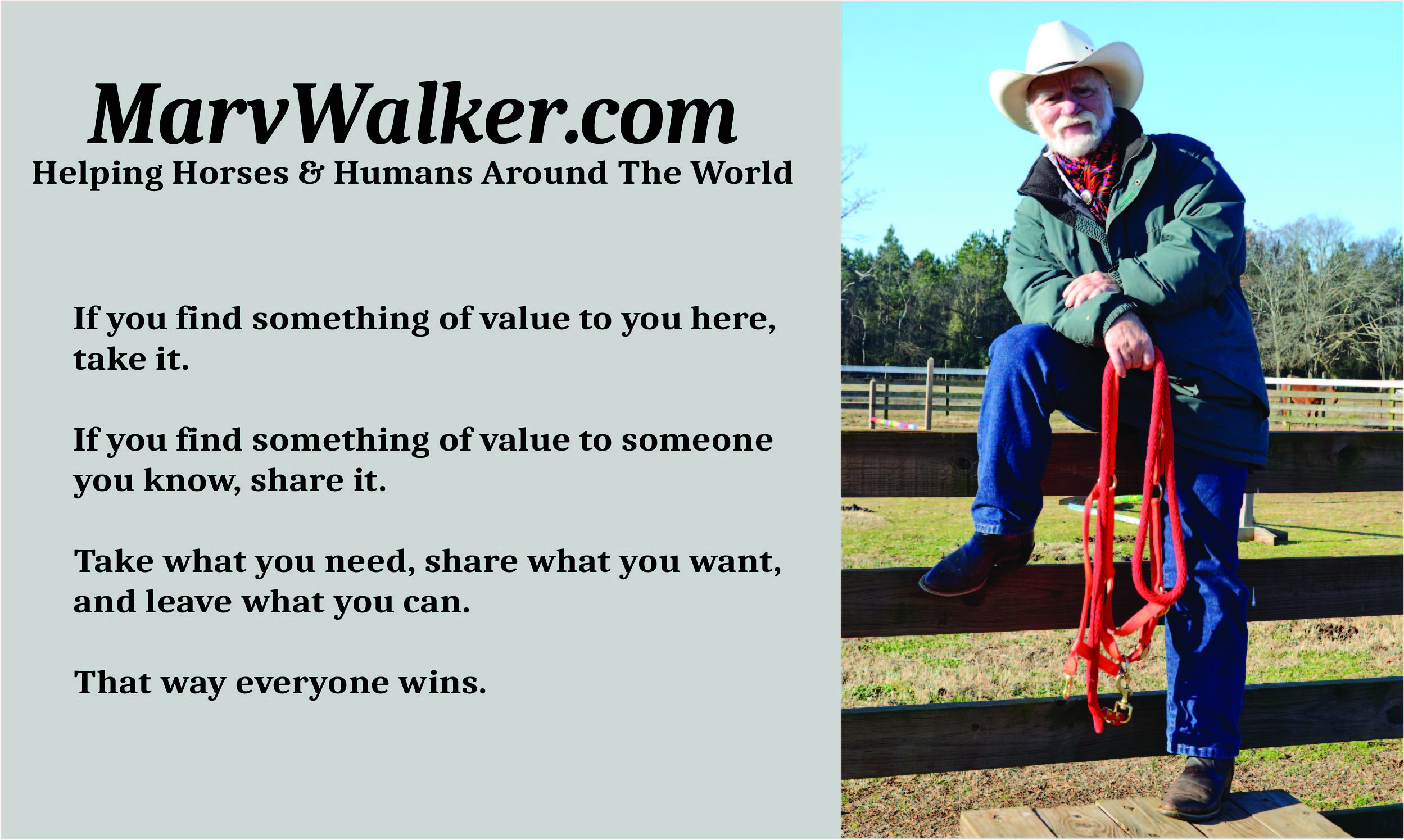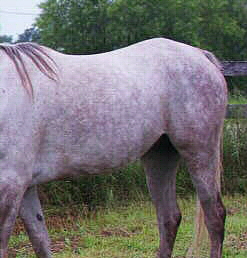

To Search MarvWalker.com Go To Google.com and type site: marvwalker.com followed by the subject you are searching for in the box.
For example: site: MarvWalker.com subject
She writes:
Now that I dont have the full story enclosed this will go through! Any way, my horse is a new five, Have had him for about 4-5 months, bought him unbroke, have done two months round pen work, everything imaginable. Got on him, six times did great, seventh time picked up into a trot and he exploded and threw me. My husband said that its just green horse stuff, now Im afraid to get on him again. I sent him out to a trainer and she said she rode him all over her farm and than out of nowhere he exploded and threw her and in the process he injured himself and came up lame. Hes sound again and I dont know what to do with him. Do you have any advice? Also would you train with a side check rein? Kind of like an anti grazing device. Sorry this is choppy, but im expecting it not to go through again.
My response:

My guess is he came up lame behind. I'm guessing lame behind based upon what *appears* to show up in the pic that came with the email which I've cropped to illustrate what I think.
Ideally in any horse you want all the lines (curves) of the horse to flow back into the horse. Any line that is abrupt or sharp angled almost certainly indicates a potential trouble spot.
In this horse if you follow the line of the horse's back over the croup and around to the hip it appears that the point of the croup peaks instead of flows. The location of this peak, called the point of the croup, is farther back than you would want it to be. The point of the croup is where several things come together that effect the way the rear end works: lumbar vertebrae (low-back bone), ilium (hip bone) and the sacrum (base of the spine).
I'm not real sure exactly what the cause is here. I suspect that the ilium (hip bone) angle is sharper than one would like it to be. I like to see it at a 45 degree angle give or take a degree. His appears to more along a 55 degree angle. Ideally we would want the ilium to have roughly a 20 degree range of motion - say 35 to 55. This horse appears to already be at maximum angle. The greater the ilium angle, the less room there is for efficient movement.
I am speaking here from what I see in ONE pic that really isn't as side-on as I'd like to be fully confident in my assessment.
In my opinion, this sets the point of croup back farther than one would like which makes the junction of the structures too abrupt with decreased fluidity and shock absorption. In my opinion this creates low back pain by limiting the flexibility of the hind quarters - we have a \/ relationship to the lumbars rather than a || relationship between the individual lumbars. In the \/ relationship there is little flex room at the bottom of the lumbars for the horse to get under himself for gait changes. This also interferes with flex room at the top of the lumbars during weight transfers because the distance is too severe to be effective. This is actually aggravated by the weight of a rider and the rear of a saddle would apply leverage to this area further stressing the juncture.
Ordinarily I would tell you that picking up a trot after only the 6th or 7th ride is asking for trouble. This *CAN* indeed cause wrecks but in this case I think your wreck and the wreck of your trainer has more to do with pain than anything else.
Your reluctance to ride this horse is certainly understandable. *I* would not ride it. One just-right twist and who knows what he will do?
Most of the horses I see with this characteristic are difficult to ride. They hollow-out, buck. bolt, often interfere with themselves and require constant attention. Many don't load, trailer or unload well.
Do ALL horses with this condition exhibit adverse behaviors? No. It depends on a number of variables including the horse's pain threshold.
I really wish I had something more positive to tell you but I don't. The only thing I can tell you is to have the horse looked at by an equine chiro and see what he has to say. He would be actually looking at the horse as opposed to getting his info from a .JPG file.
Do I think there are any devices that will keep him from bucking when a stab of pain hits him just right? I really don't know. It has been my experience that these "correction" devices usually make the situation worse and when the situation gets so bad the horse overrides the device you are in deep doo-doo.
Be careful, and best to you.
For Further Information Contact Marv Walker 706 816-7190 Evenings 9 to 12 PM
Questions, comments or suggestions
Back to Marv Walker's Index Page